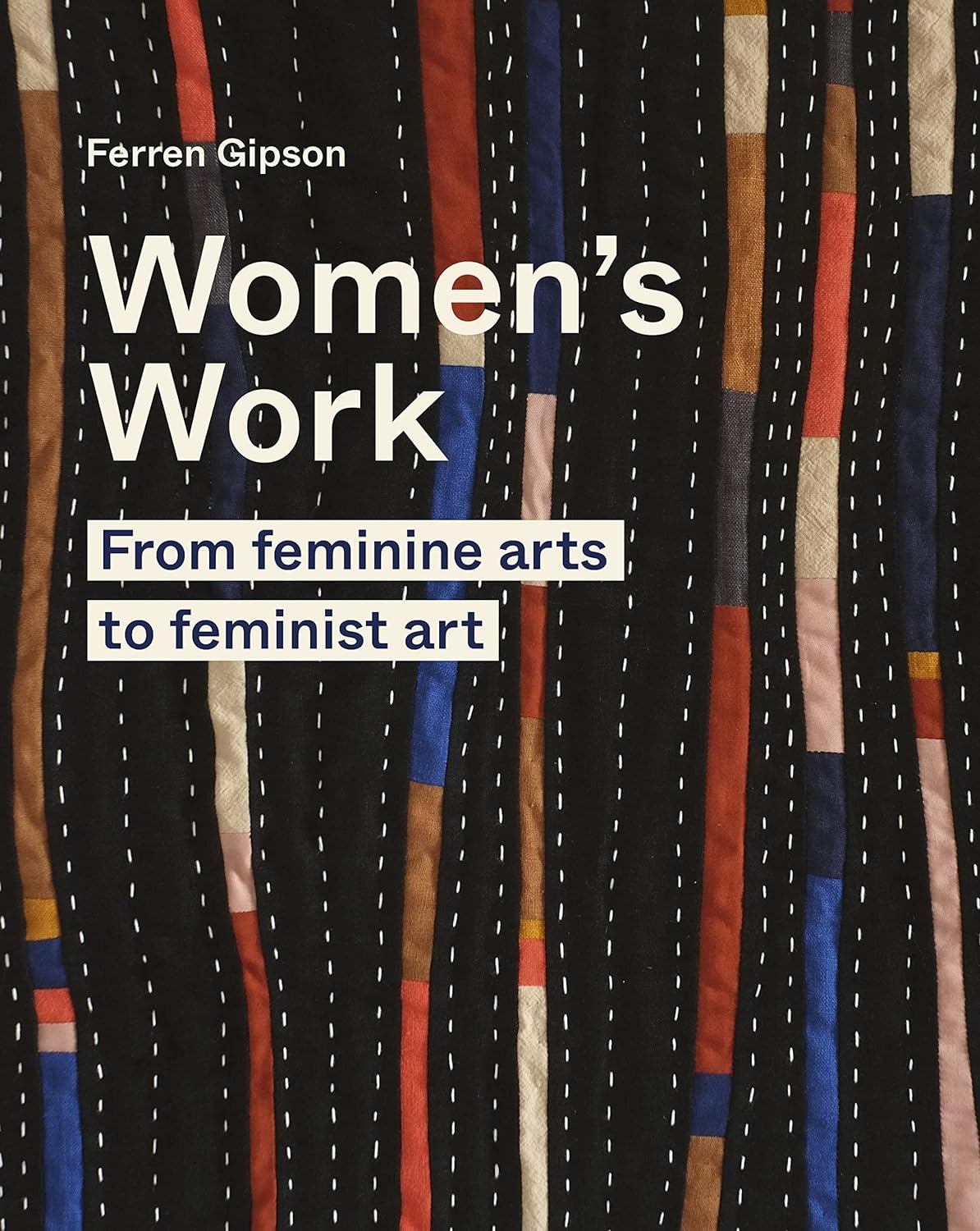
Women’s Work: From feminine arts to feminist art
by Ferren Gipson
Historically, Western art has held ‘high art’—namely painting and sculpture—in higher esteem than the practices of decorative and applied arts. These arts, including textiles and ceramics, have historically been regarded as better suited for women. As such, they have often been neglected or taken less seriously in a male-dominated art world. Women’s Work highlights some of the artists who have reclaimed and re-defined these mediums and techniques, imbuing within them expressions of identity and creative originality. A fascinating read, this book tells the stories of some of the modern and contemporary artists who have, through experimentation and ingenuity, challenged this hierarchy and transformed perspectives.
Explored in this book are the lives and works of thirty-three individuals and one collective who have worked with ceramics, textiles and soft sculpture from the twentieth century to the present day. The women included hail from a wide variety of backgrounds, so their lives and artworks come to represent a broad range of creative and sociopolitical perspectives. As individuals, the stories of each woman speak of their unique and blazing talents, which intertwine to provide a broader understanding of how their mediums came to be where they are. Author Ferren Gipson uses the analogy of a quilt to describe the ways in which individual book chapters—or “blocks”—combine to tell a larger story of textile and ceramic art in the 20th and 21st centuries.
The subject matter of the book is reflected in its presentation; it is bound with a non-traditional exposed spine to reveal the page stitching. The pages are also bound together with brightly coloured thread, emphasising the materiality and handcrafted nature of the works included. Incorporated into each chapter are detailed illustrations which show defining examples of each artist’s creative output. This book is a pleasure to behold and an eye-catching addition to any collection.
Author Ferren Gipson is a British-American art historian, researcher, writer, broadcaster and artist. Throughout her work, she strives to make art more accessible to reach a wider audience. For Women’s Work Ferren was awarded two Foreword INDIES Book of the Year awards, and her other commended literary contributions include The Ultimate Art Museum (2021) and The Art Book for Children (2005). She is also the host and creator of the Art Matters podcast, which examines the relationship between art and wider culture, and considers the ways art history can inform us about the world around us. Currently a doctoral researcher at SOAS University of London, she continues to utilise captivating storytelling techniques to amplify the voices of women artists, advocate for education in the arts, and absorb readers with knowledge about the art world.
Each new chapter in Women’s Work is assigned to an individual artist or collective. These blocks are arranged chronologically according to each artist’s birth year, giving a sense of historical flow and allowing readers to visualise how various artistic narratives intersect. The chapters begin with the story of the Women of Gee’s Bend: a collective of women who, over the course of two centuries, have developed distinctive quilting customs interwoven with the legacy of Black artistic traditions. These quilts, characterised by their bold, improvisational and geometric qualities, are among the most important African-American visual and cultural contributions to the history of art within the United States.
The book continues with captivating stories of the lives and works of artists such as Maria Martinez, Elsa Schiaparelli, Faith Ringgold, Louise Bourgeois, Yayoi Kusama, Magdalena Abakanowicz, Judy Chicago, Mrinalini Mukherjee, Sarah Lucas, Yin Xiuzhen, Tschabalala Self, and many more. The chapters conclude with the story of Hannah Hill, a contemporary embroidery artist who uses the medium to probe personal emotions and facets of identity, as well as to advocate for social causes. At the end of the book is a large list of ‘More Artists to Explore’, citing the names and primary mediums of various other artists who have contributed to this creative arena.
It is enlightening to learn about artists who, in their lifetimes, have overcome obstacles and broken boundaries to become masters of their craft and shift cultural attitudes towards their medium. Masterful and innovative women continue to invigorate and redefine this field of art, and Ferren does an exceptional job at relaying their stories and uplifting their artistic contributions.
By Ally Bartley










